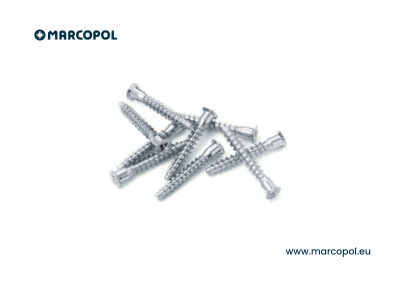
Different types of screws. A comprehensive guide to screw types, heads, and DIN standards
Screws are an essential component in modern engineering and construction. They enable secure fastening of components and ensure effective force transmission. This article provides a detailed overview of the different types of screws, their heads, and the relevant DIN standards. Special attention is given to the various materials and their applications to offer a comprehensive understanding.
What are the different types of screws?
There are numerous screw types, each designed for specific applications. The most common ones include wood screws, metal screws, and sheet metal screws. Wood screws are ideal for wooden structures, whereas metal screws are often used in metal constructions. Additionally, specialized screw types such as countersunk screws or self-tapping screws offer distinct properties and benefits. The designation of these screws often follows specific standards, simplifying selection and application.
Another crucial aspect of screw types is the threading, which plays a vital role in fastening. There are metric threads commonly used in industrial applications, as well as specific threads for specialized requirements. The wide variety of screw types allows for tailored solutions for different tasks, enhancing both efficiency and safety in connections. Ultimately, understanding the different screw types is essential for choosing the right fasteners in various projects.
What are the different types of metal screws?
Metal screws come in various forms, offering high strength and durability. Among the most important are stainless steel screws, widely used in outdoor applications due to their corrosion resistance. Steel and zinc-coated screws are also common, each possessing unique properties suited for specific applications. Choosing the right metal screw is crucial for ensuring stability and safety in construction.
Another type of metal screw includes threaded bolts and threaded rods, which provide flexible solutions for applications requiring variable lengths. These screws enable the fastening of multiple components where standard screws might not suffice. Additionally, special coatings for metal screws offer extra protection against rust and wear, significantly extending their lifespan. The diverse selection of metal screws ensures a precise match for project requirements.
How are screw heads designed and categorized?
The design of screw heads is crucial for functionality and the ease of driving screws into materials. Various screw head types differ in shape, size, and drive type. The most common ones include hex heads, countersunk heads, and TX heads. Each head type offers specific advantages that facilitate handling and assembly. For example, hex heads allow for high torque transfer, while TX heads provide better grip and reduce tool slippage.
Furthermore, screw heads are designed to work optimally with corresponding tools. The countersunk head is specifically shaped to sit flush with the surface, ensuring a clean and aesthetically pleasing finish. Choosing the right screw head is essential for maximizing driving efficiency while ensuring a secure connection. The structure and types of screw heads play a central role in the functionality and application of screws.
What are the most common screw head types?
The most common screw head types include hex heads, countersunk heads, pan heads, and TX heads. Hex heads are frequently used in mechanical applications due to their high strength and compatibility with wrenches. Countersunk heads, on the other hand, are commonly used in woodworking, providing a flush fit that does not interfere with the surface. TX heads are especially popular in the automotive industry, as they offer superior torque transfer and prevent tool slippage.
Selecting the appropriate screw head type depends on the specific application. Pan heads are often used for visible fastenings, as they provide an aesthetically pleasing appearance. When using screws, it is crucial to choose the right head type to ensure proper installation, strength, and stability. Overall, screw head types significantly impact the quality and durability of screw connections.
What Materials Are Used for Screws?
Screws are manufactured from various materials, with the choice of material significantly affecting their properties and applications. Steel is the most commonly used material due to its high strength and durability. Stainless steel is preferred for applications requiring corrosion resistance, such as outdoor or humid environments. The choice of material is critical for ensuring the longevity and safety of screw connections.
Another key factor is the coating of screws, which provides additional protection against rust and wear. Zinc coatings are widely used to enhance the corrosion resistance of steel screws. Wood screws are often made from specialized alloys or coated to improve their suitability for wooden structures. The selection of materials directly impacts the performance and lifespan of screws, making it an important consideration in project planning and execution.
- Wood screws – selecting length and thread type - 29 October 2025
- Rivet Nuts – sizes, types, and how to use them - 29 October 2025
- Trust the results — act with confidence - 10 October 2025